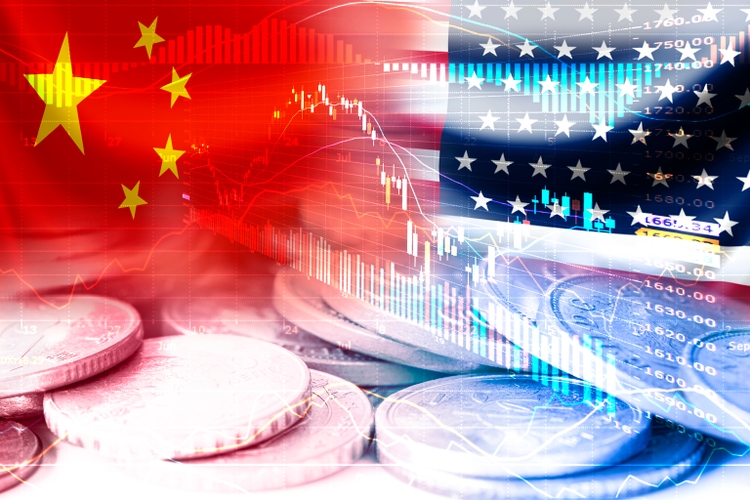Dilok Klaisataporn/iStock via Getty Images
By William H. Witherell
Russia’s war in Ukraine and Covid-related shutdowns in China have led to both slower growth prospects and higher inflation for the global economy. What was expected to be a continued strong recovery has been transformed in the second quarter to a stalling global economy. Worsening consumer and business sentiment, increased inflation, and central banks moving to tighten monetary policy, with the US Federal Reserve being the most aggressive, have increased the risk of a global recession. The Bank of England is already predicting a recession in the UK, and Germany’s GDP likely declined in the current quarter. Nevertheless, a soft landing for the global economy may still be possible, depending on the strength of an anticipated recovery in the Chinese economy along with other large Asian economies. Positive global growth still looks likely to return in the second half of this year, with real GDP growth for the year 2022 at 3% and at a similar rate next year.We have written about the central role that China plays in the global economy. It has the second largest economy, following the US, and is the world’s leading exporter, with critical supply chain connections to most economies. While there has been a lot of talk about “decoupling” from China, the reality is that the world economy remains heavily connected to the Chinese economy. When China imposed widespread lockdowns in April in pursuit of its zero-Covid policy, its economy was dealt a major blow. Output in both the industrial and service sectors turned negative in April; port activity was disrupted; and retail sales fell some 11%.In May, Covid restrictions were eased; supply disruptions were reduced; and economic policy stimulus measures were increased, with promises of more to come. The Chinese economy responded more robustly, than the market expected. Industrial production returned to positive growth, led by automobile and electric machinery production. Fixed-asset investment rebounded, led by infrastructure investment. The decline in retail sales continued but at a slower pace, which beat market expectations. China’s Covid statistics improved dramatically. The seven-day average daily case numbers have dropped to about 200, compared with some 30,000 in April. Nevertheless, mass testing is being imposed in some areas; and there have been some new, limited shutdowns.The Chinese economy probably hit bottom in April. Economic momentum appears to be picking up in June as more of the economy comes back online, the Shanghai lockdown has been lifted, and policy stimulus measures are having an increasing effect. Monetary and fiscal measures are being targeted to support small and medium-sized enterprises, real estate, manufacturing, and infrastructure financing. “Normalization” of the supervision of technology companies, following a year of regulatory crackdowns, and an outright pledge of support for the sector are welcome news to investors. Such measures to shore up domestic demand and improve export potential will be critical for maintaining the recovery in the second half and in 2023, when external demand may continue to be weak. Fallout from the Russia-Ukraine war will be a negative factor, causing a global supply shock to energy and food. China’s economy is projected to achieve an annual growth rate of about 4% this year. That would be just half the growth rate of last year but still stronger than the growth of most other economies. Growth in 2023 may average over 5%. Future Covid outbreaks will continue to be a risk to this outlook, although the government has modified its anti-Covid policies to be somewhat less disruptive.Economies in the Asia-Pacific region will benefit from a recovery in China. Particularly important will be a reduction in the disruptions in Asia’s supply chains. China has already had substantial success in its efforts to reduce logistics hurdles and otherwise support foreign trade. Chinese goods exports in US dollar terms increased 16.9% year/year in May compared with just 3.9% in April. Supply delivery times also improved in May. Stronger growth in China and fewer restrictions on activity should have a healthy effect on the Chinese demand for the exports of other Asia-Pacific economies. South Korea’s exports to China stabilized in May. The region will be affected by the Russia-Ukraine war mainly through the impact of the war on the region’s export markets, particularly those in Europe. Nevertheless, growth rates in the region’s resilient economies are likely to remain among the globe’s strongest, with this year’s growth rates for India, Indonesia, Malaysia, Singapore, and the Philippines all likely to be above 5%.
If our expectations for a sustained recovery in China’s economy are in the ballpark, China’s stocks are likely to outperform. That has already been the case over the past three months through June 17, an otherwise dismal period for global equity markets. During this period, the Shanghai market managed a gain of 2.0% while the S&P 500 lost 17.7% and the STOXX Europe 300 lost 11.1%. At Cumberland Advisors, we currently have a positive but underweight position in Chinese equities in our International and Global Equity ETF Portfolios. That position can change any day depending on developments.
Editor’s Note: The summary bullets for this article were chosen by Seeking Alpha editors.


Be the first to comment